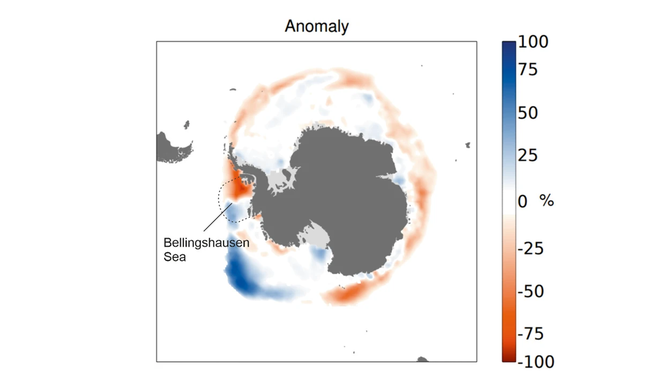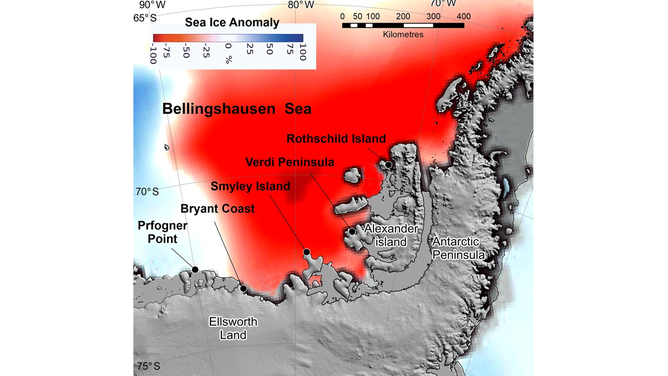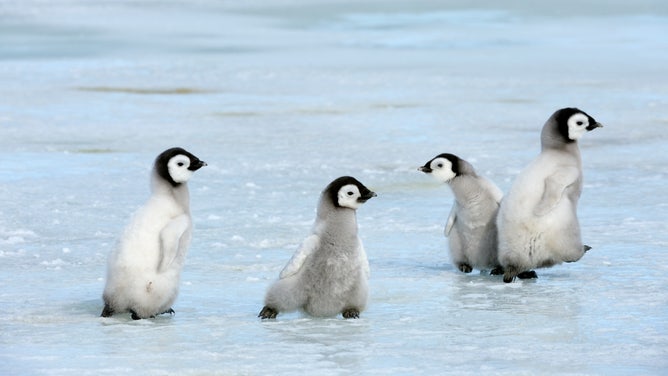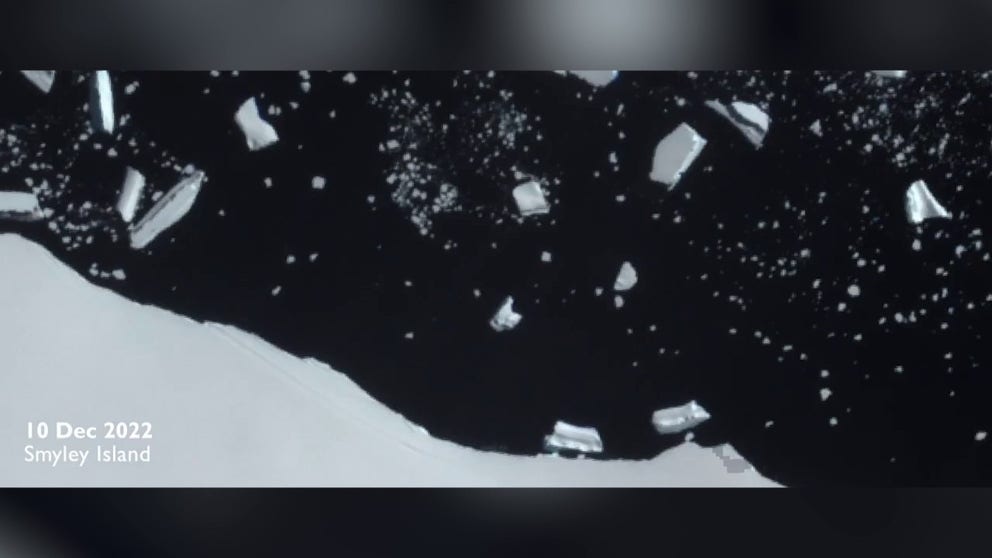Low sea ice in Antarctica causing 'catastrophic breeding failure' of penguins, study finds
Researchers noted that this is the first record of a widespread breeding failure of emperor penguins that is clearly linked with large-scale reductions in sea ice.
'Catastrophic breeding failure' of penguins caused by low sea ice in Antarctica
Record-low levels of sea ice in western Antarctica in late 2022 led to the breeding failure of four emperor penguin colonies, according to a study published on Thursday. (Courtesy: European Commission, Copernicus SENTINEL-2 via Storyful)
Record-low levels of sea ice in western Antarctica in late 2022 led to the breeding failure of four emperor penguin colonies, according to a study published on Thursday.
Researchers noted that this is the first record of a widespread breeding failure of emperor penguins that is clearly linked with large-scale reductions in sea ice.
"Recent efforts to predict emperor penguin population trends from forecasts of sea ice loss have painted a bleak picture, showing that if present rates of warming persist, over 90% of emperor colonies will be quasi-extinct by the end of this century," the study said.

FILE: Emperor penguins.
(Wolfgang Kaehler / LightRocket / Getty Images)
The extent of sea ice is critical for the penguins, which use the ice for all parts of their life cycle, according to the study. In particular, breeding, which begins as early as late March and extends to January, depends on the land-fast ice to remain stable during that time.
7 THINGS YOU PROBABLY DIDN'T KNOW ABOUT PENGUINS
However, scientists found that Antarctica as a whole saw record low sea ice extent in the spring of 2022, even tracking with the all-time low of 2021. In fact, they found that the greatest regional reduction in sea ice extent was in the central and eastern Bellingshausen Sea region. There, some regions experienced a 100% loss in sea ice concentration.

Blue areas in the map show positive sea ice anomaly, red shows negative. Although most of the continent has witnessed negative sea ice extent, the Bellingshausen Sea area has been particularly badly affected with up to 100% loss of ice in the region. (Data: ERA5. Reference period: 1991–2020.}
(C3S / ECMWF / FOX Weather)
In this area, scientists studied five locations that host five emperor penguin colonies: Prfogner Point, Bryant Coast, Smyley Island, Verdi Peninsula and Rothschild Island. Of these sites, all but one experienced early sea ice loss.
The graphic below shows the color red, which indicates a reduction in sea ice extent for November 2022, stretching across Bryant Coast, Smyley Island, Verdi Peninsula, Rothschild Island and toward the end of the Antarctic Peninsula.

The locations of the five emperor penguin colonies by the Bellingshausen Sea -- Prfogner Point, Bryant Coast, Smyley Island, Verdi Peninsula and Rothschild Island -- in this region superimposed over the regional sea ice concentration anomaly for November 2022 shown in red.
(Nature / FOX Weather)
Satellite imagery from the Copernicus SENTINEL-2 satellite, as seen in the video at the top, shows how much the sea ice has receded around Smyley Island and Byrant Coast, in particular.
COUNT PENGUINS IN ANTARCTICA? THIS REMOTE JOB'S CHILLING HISTORY IS NOT FOR EVERYONE
Because of this sea ice loss, researchers said three of the colonies were abandoned at the start of the chicks’ fledging period in early December. Pfrogner Point was also abandoned between late October and early November, which local fast ice conditions in mid-late October indicate was due to a reduction in sea ice extent.

Smyley Island sea ice breaking up by December 2022.
(European Commission, Copernicus SENTINEL-2 via Storyful / FOX Weather)
The only colony that was not abandoned and appeared to have successful fledging of chicks was the Rothschild Island colony, despite its location within the negative sea ice anomaly. According to researchers, the success of the penguins here may be due to the geometry of the bay and presence of icebergs stabilizing the sea ice at the location. In doing so, it afforded them protection from ice breakout until after the chicks had fledged.
"Only one of the sites in our study region had experienced catastrophic breeding failure prior to 2022," the study said. "Our finding of probable breeding failure across multiple, non-blinking, sites in a single season is without precedent."

FILE: Penguin chicks.
(Wolfgang Kaehler / LightRocket / Getty Images)
Researchers said that penguins arrive at their preferred breeding sites toward the beginning of spring in late March to April and then lay eggs from May to June. After about 65 days, the eggs hatch, and the penguin chicks fledge during December and January.
The largest of all penguin species, emperor penguins are the only species to breed during the extreme Antarctic winter, when temperatures can plummet to nearly -60 degrees Fahrenheit and winds can exceed 180 miles per hour, according to the National Science Foundation.
